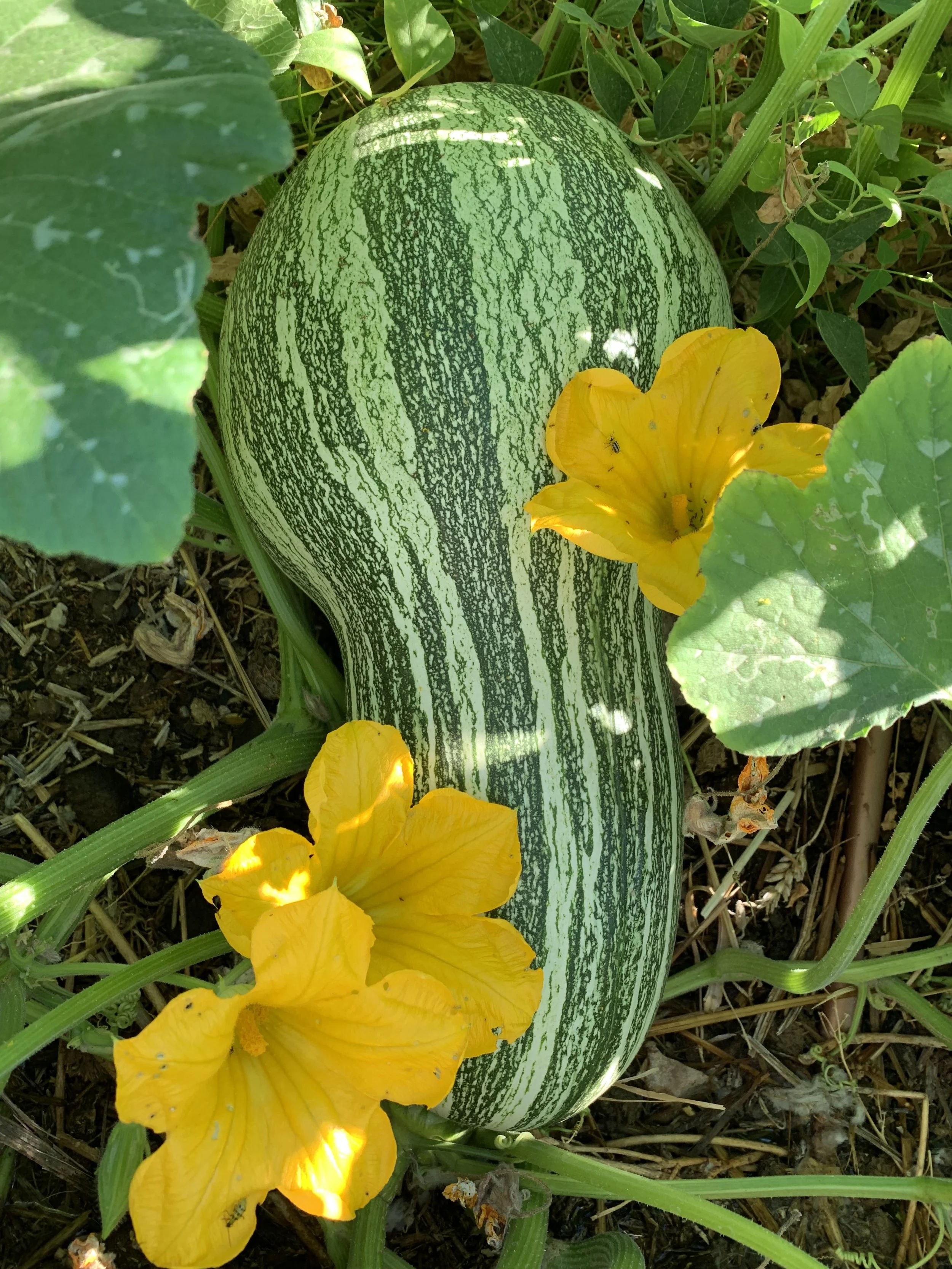Sowing New Seeds of Celebration
By Emily Rockey, Garden Supervisor
Did you feel it? We’ve just turned the corner into summer at Mission Garden! In addition to the temperature gauge tipping over the 100 degree mark, we know it’s certainly summertime when the first cicada reveals its location with a loud “tziiiii!”, just as it did on Saturday, May 14th. The dozen fluffy quail babies can now flutter just enough to reach the top of the garden wall, following mom and dad. Hollyhocks are trumpeting pink, white and red music throughout the garden to visitors’ delight. These particularly beloved flowers seem to conjure personal memories of grandmothers, mothers and aunts, and these stories are often shared by visitors who can’t help but smile as they recall fond memories while gazing into these towering blossoms. That’s a magical part of Mission Garden, isn’t it? Sparking memories by way of the traditional and heirloom plants that have long been treasured by so many generations across diverse cultures.
The Timeline Gardens of Mission Garden represent the multicolored fabric of people and cultures throughout history, celebrating and describing their similarities and differences through the language of plants and gardens. Gardens are ever-evolving, and our gardeners have been energized and invigorated while turning new soil and sowing new seeds–literally and metaphorically. In the Pre-Contact O’odham Garden, Tohono O’odham 60-day corn seeds are just breaking through the surface of freshly formed beds, shaped with care and reverence for those who have farmed here for millenia. Through the collaboration and significant teamwork between Mission Garden and Ajo CSA as part of the “O’odham Ag Days” series, the garden staff, interns and volunteers worked together to realize their vision. The redesign turned what was formerly a row-crop system into deep basins that stem from the acequia canal, which now more accurately demonstrates the methods used by this area’s earliest farmers, the O’odham and their Hohokam ancestors. What a sight it will soon be: beds brimming with exuberant corn, broad leafed Ha:l squash, resilient teparies, and yellow O’odham melon, sure to quench our thirst on a summer afternoon. I admire the work of Assistant Gardener and Cultural Outreach Coordinator Maegan Lopez who took the lead on this project, and I know that she looks forward to welcoming you and all visitors at the upcoming “O’odham Ag Days” held the third Saturday of each month.
Ha:l Squash
Africa in the Americas Garden Volunteers
Just across the garden, the new Africa in the Americas Garden is getting ready to “bloom”! We are honored to host an inaugural event on June 4th, and welcome the whole community to come and celebrate the development of this special space. Our goal is to help tell the fascinating history of African people in the southwest through the crops that they grew and the garden spaces they created–then and now.
Nearby to the Africa in the Americas Garden, we are also embarking toward an important goal to begin planting the Yoeme Garden. (No, no moss grows under our garden boots!) After some years researching, planning, and convening with generous members of the Yoeme (Yaqui) community, we are sowing some of the first crops this month. The Garden is honored to have the community's support and participation, guiding decisions for Yoeme corn, basil, and gourd seeds, informing which medicinal plants, and shaping designs for a space that can be used for celebration and ceremony, if desired by the Yoeme community.
Finally, a word of gratitude for the hundreds of hands and feet in the garden, offered by generous volunteers and staff to make our collective work possible. It is bittersweet to say farewell and thank you to interns Blake Calderera, Cara Morton, and Ellen Platts as they take their next steps. We are grateful for all they brought to Mission Garden. This summer we also welcome garden intern Nathan Walker from Prescott College, who is studying soil science. With each person’s contributions, each turn of the shovel or future fig picked, we believe that together we are making a difference to preserve Tucson’s rich agricultural heritage.



